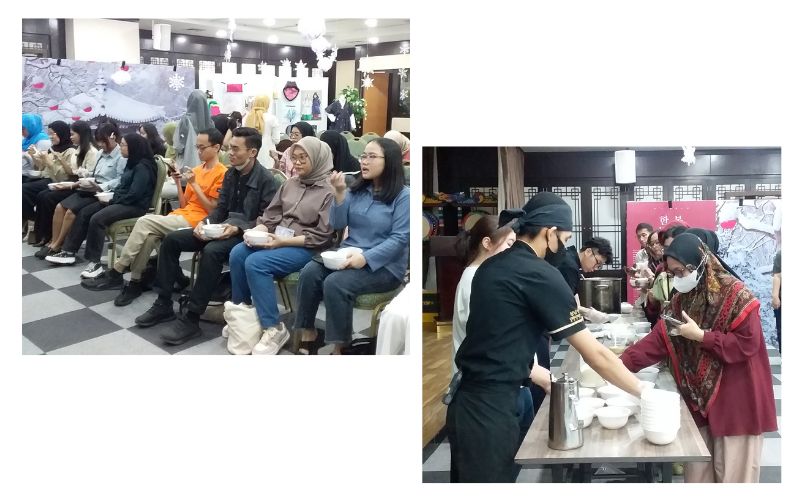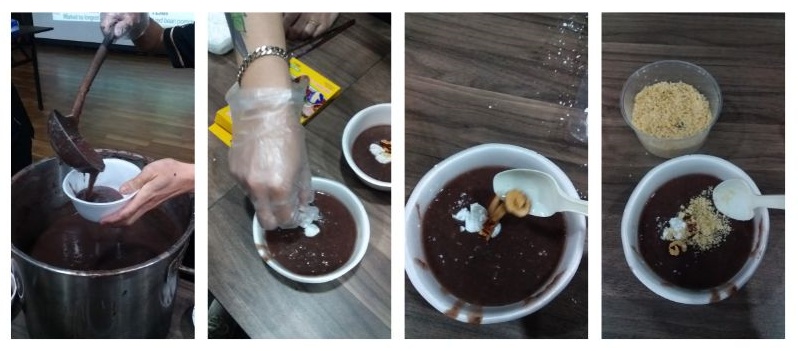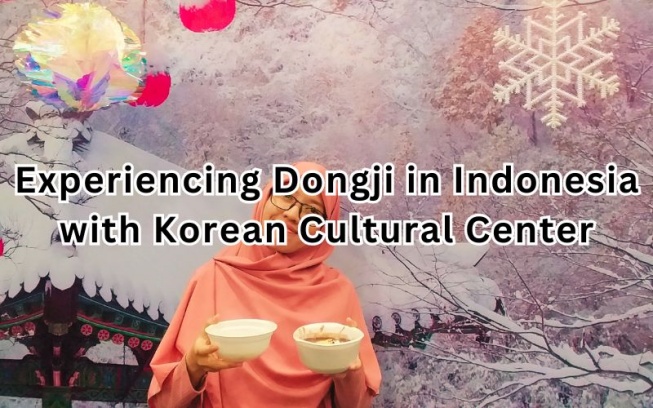- 한국어
- English
- 日本語
- 中文
- العربية
- Español
- Français
- Deutsch
- Pусский
- Tiếng Việt
- Indonesian
By Honorary Reporter Hurum Maqshuro from Indonesia
Photos = Hurum Maqshuro
The Korean Cultural Center (KCC) in Jakarta, Indonesia, on Dec. 22 held the event "Dongji Experience" on traditional Korean foods eaten on Dongji (winter solstice), one of Korea's 24 solar terms that fell on Dec. 22 this year. This date is supposed to have the shortest day and longest night of the year.

My friends also took part at the event "Dongji Experience" at the KCC in Jakarta.
At this event, the KCC invited Korean chef Jeon Byung-jun to show how to make traditional Dongji foods. On that day, the Korean tradition is for the family to eat patjuk (red bean porridge), which according to mythology was believed to repel evil spirits, especially goblins, with its red color supposedly feared by these supernatural beings.
The chef explained the process of making patjuk and described how it is often served with saealsim (rice dough balls), which is made from glutinous rice flour, jujube slices and pine nuts.

A participant adds jujube slices and sprinkle pine nuts on their patjuk.
After hearing explanations on Dongji and the foods associated with it, the participants sampled patjuk and sujeonggwa. The KCC also held a quiz on Dongji for attendees while they enjoyed the delicacies prepared there.

The photo on the left shows how I added a teaspoon of sugar, jujube slices and pine nuts to my sujeonggwa; the KCC's multifunction room in the upper right corner sports a winter theme; and a photo with my two creations is on the lower right photo.
The chef's detailed explanation on how to make traditional dishes, particularly patjuk and sujeonggwa, was a highlight for me. I was surprised at the simplicity of the recipes and got excited over making both at my own kitchen. Making these dishes for my family seems like a great way to share a taste of Korea with them.
msjeon22@korea.kr
*This article is written by a Korea.net Honorary Reporter. Our group of Honorary Reporters are from all around the world, and they share with Korea.net their love and passion for all things Korean.
